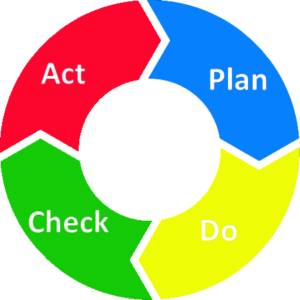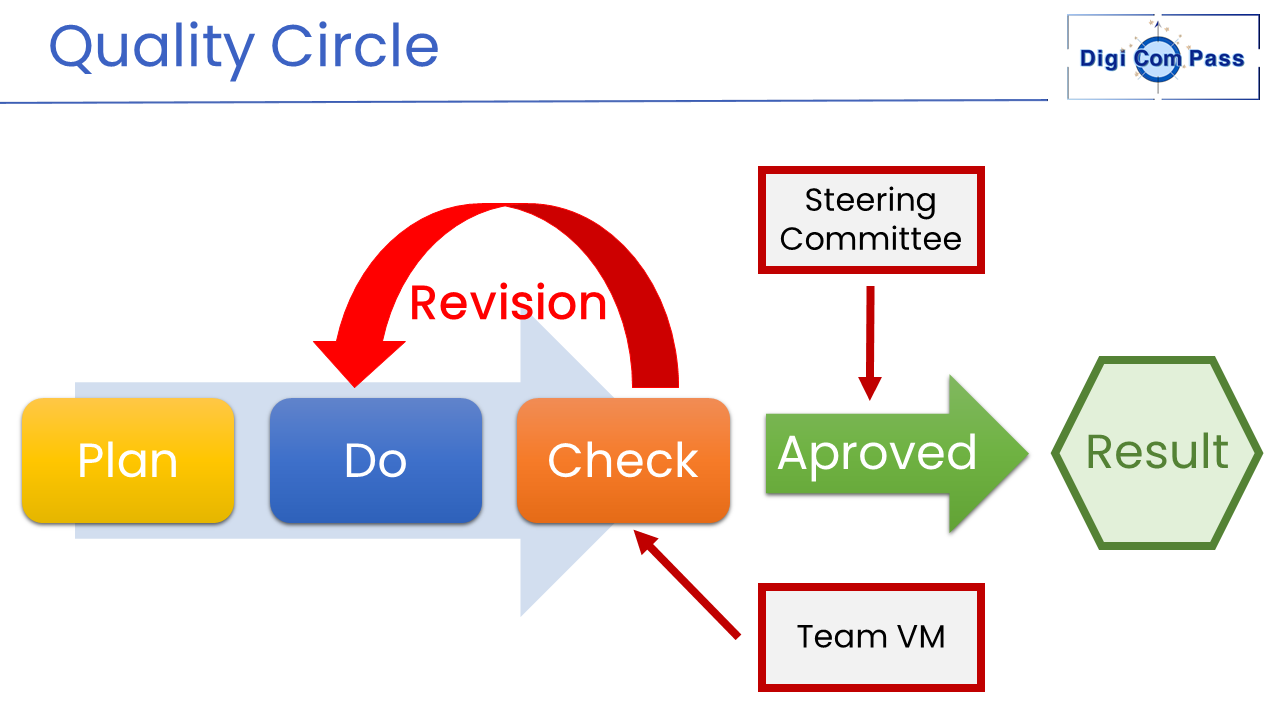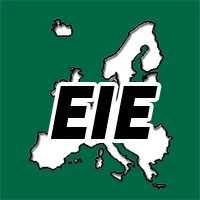The EBI is regularly involved in various projects, most of which are transnational projects in the frame of the Erasmus+ program. The products and results produced in the frame of these projects require quality control or sometimes a quality improvement (enhancement) process. For many years, the EBI/EIE worked on the development of easy-to-handle but successful methods. During the last years – in context with the COVID-19 crisis, face-to-face meetings were not possible in the necessary frequency. We started to work with “Quality Control Circles” (a common means in typical project management) and called them Quality Enhancement Circles.
What is a Quality Circle Process?

Most quality circles will work through a set process with each meeting. In general, this will follow the Plan, Do, Check, Act process, which is ideal for continuous improvement projects. PDCA (plan–do–check–act or plan–do–check–adjust) is an iterative design and management method used in business for the control and continual improvement of processes and products.
The four steps are defined as1:
Plan
Establish objectives and processes required to deliver the desired results.
Do
Carry out the objectives from the previous step.
Check
During the check phase, the data and results gathered from the do phase are evaluated. Data is compared to the expected outcomes to see any similarities and differences. The testing process is also evaluated to see if there were any changes from the original test created during the planning phase. If the data is placed in a chart, it can make it easier to see any trends if the PDCA cycle is conducted multiple times. This helps to see what changes work better than others and if said changes can be improved as well.
Act
Also called “Adjust”, this act phase is where a process is improved. Records from the “do” and “check” phases help identify issues with the process. These issues may include problems, non-conformities, opportunities for improvement, inefficiencies, and other issues that result in outcomes that are evidently less-than-optimal. Root causes of such issues are investigated, found, and eliminated by modifying the process.
The Challenge for Project Results
In the common Erasmus+ projects, we did not have a quality circle (people from one organisation meeting regularly to check, discuss and decide about the quality of products). We had people in various European countries that met in virtual meetings (often performed via ZOOM) to discuss technical issues.
We developed a kind of quality enhancement circular process, where people from all partners could be involved to check the quality and to decide finally about the acceptance of the product.
How do we work on projects?
For each product, a partner is in charge to coordinate the production of the outcome. This partner is also responsible to monitor the production process, and other partners are involved in the creation and work on the expected product.
When the product is finished, the quality check is the next step. Here is a simple depiction of the process:

The circle shows the Plan → Do → Check → Act structure, but in a linearized way. The circle was opened, and a cycle process is only leading from the check result back to the Do item. The reason is that from the planning (mostly done by Backward Design) the plan must not be adapted, corrected, or changed. This is a fixed starting point of the working process.
The “quality circle” (as a group of people) is replaced by a Virtual Team Meeting (with team members selected from all partners). These people check the expected result, compare it with the checklists (available from the milestone plan) and decide:
- If the product fits, it is forwarded to the Steering Committee (or Steering Group of the project). The steering group will approve the result (but has the right to send it back into revision if necessary).
- If the product does not fit, a description of necessary amendments is created, and the product is put into revision. The project partner in charge to develop the product can do the amendments and forward the product again to the Team VM group.
This simple process enables a minimized effort with maximum quality and enables to keep the production process of project outcomes simple.
